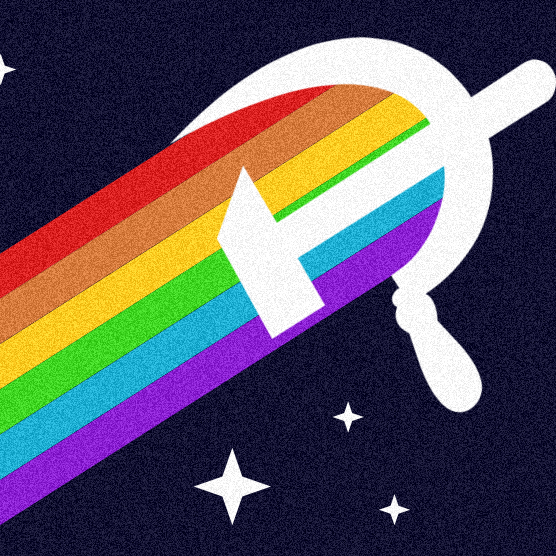Staggering amounts of toxic “forever chemicals” have been found in freshwater fish, but there is no federal guidance on what is a safe amount to eat
Bill Eisenman has always fished.
“Growing up, we ate whatever we caught — catfish, carp, freshwater drum,” he said. “That was the only real source of fish in our diet as a family, and we ate a lot of it.”
Today, a branch of the Rouge River runs through Eisenman’s property in a suburb north of Detroit. But in recent years, he has been wary about a group of chemicals known as PFAS, also referred to as “forever chemicals,” which don’t break down quickly in the environment and accumulate in soil, water, fish, and our bodies.
The chemicals have spewed from manufacturing plants and landfills into local ecosystems, polluting surface water and groundwater, and the wildlife living there. And hundreds of military bases have been pinpointed as sources of PFAS chemicals leaching into nearby communities.
If you’ve been catching fish in a river or lake in the U.S. and eating it in the past 50 years or so, you’ve already been eating a ton of toxic shit. PFAS are just the icing on the cake. And we’ve basically saturated our entire generation with PFAS and will continue to do so until companies stop using them.
Companies – But it’s too H A R D to develop anything else!
Detroit already has some pretty restrictive fishing limits from pollution: 3-4 sunfish or 1 bass per month
PFAS should be the least of this guy’s concerns
But if we can’t make cars by dumping all the shit in the river, how will america do Americanisms?
Do you think America is the only country with pollution?
No, but this article is about pollution in America, so my comment was targeted as such
Plastics in our fetuses, PFAS in the fish… Smartest species on the planet apparently.
We put lead in gasoline well aware that lead was toxic and knowling fully that lead would come out the tailpipe and it still took us decades to reverse that decision.
Avgas is still used in some race cars and small planes with combustion engines tho … so not completely gone.
We will favor cost savings over safety every damn time.
Well, evolution is pretty fucking stupid it turns out. It just tries shit generation after generation; and those with the winning genes have more babies. Humanity is arguably the longest running experiment by evolution, and we’re now getting to a point that “imagination” which is what put us ahead of the game, and allowed things like art and science to prevail, also allows people to “imagine” how they can step on those around them to have a better life themselves. I think evolution’s experiment of imagination is either coming to a close, or we’ll be replaced with true AI, which, really is sort of the peak of evolution anyway.
I find it’s helpful to mention what you can do to avoid them and their creation.
Where are PFAS found? Cleaning products. Water-resistant fabrics, such as rain jackets, umbrellas and tents. Grease-resistant paper. Nonstick cookware. Personal care products, like shampoo, dental floss, nail polish, and eye makeup. Stain-resistant coatings used on carpets, upholstery, and other fabrics.
Note that it seems to be pretty safe when it’s applied to something. The danger is mostly when it’s applied/created. The big reason to not buy these products and to look for alternatives is that you’re decreasing demand for the products
Good point, sorta but not buying prevents it’s creation regardless of its safety while being used.
Honest question, what about when it comes off after being applied? Looking at Nonstick pans. They are notably something that flecks off the coating in your food.
Or prolonged direct skin contact from clothing, and then washing that clothing, tent, or other item. Washing it does removes some of PFAS into the water supply.
I don’t know about you all, but after cleaning something with water resistance, I end up reapplying it with something like scotch guard. I have no idea how many cans of scotch guard I’ve used (I love outdoor activities). Never used gloves or a mask using that stuff.
From my understanding the use is totally safe
I’m told you could eat big chunks of the stuff and it would pass right through you.
PFAS is so carcinogenic that if you WERE getting some of it in your body from this kind of exposure then we’d see really high cancer rates, the same way we do in factories near it. At least, that’s my conjecture
Minutes food did a good video on it’s safety if you’re interested
There are flosses that don’t have PFAS, but they are a bit rarer and don’t “glide” like normal flosses as much. The PFAS make them glide. There are nonstick pans that don’t use PFAS, but they are a bit rarer and more expensive. In the end, I think it’s worth it.
It will be difficult to fully phase out, but we’ll do it. Rainjackets are gonna be difficult to do, and you’ll see some first-gen non-pfas ones in the coming years. They will probably repel rain for a light spray, but eventually give up the ghost under a heavy downpour. I think we might go back to rubber for heavy-duty rain slickers.
Friendly reminder to donate blood or plasma regularly. We do need to deal with PFAS, but at least you can reduce the accumulation in your body.
You should do that anyway, but as far as PFAS, the study unfortunately only showed a 30% decrease. I doubt that is enough to avoid the long-term effects.
Does the PFAS get filtered before going into someone else’s bloodstream? This seems weirdly like “give someone else your chemicals,” a reverse Peter thiel situation
someone that needs blood has probably lost blood already so it’s probably better to not die.
I haven’t read anything about it, but I’m pretty damn sure there’s no easy way to remove it without destroying the blood or plasma. Given the alternative, though (dying of blood loss), some PFAS are probably the least of a patients concerns that day. x3
i would not infer that 30% was the limit, that’s just the reduction after 1 year of donating every 6 weeks.
PFAS is also in drinking water. I don’t think there are any standards for levels of it in our water systems in the US.
I want to get a water filter but a good one it’s around $300. Not all water filters remove PFAS.
I have this which is $113 right now and I think you can catch it for a bit cheaper sometimes. Of course you have to factor in installation costs if you’re not comfortable installing it yourself.
It’s great though because it makes it easy to use filtered water even for tea, coffee, cooking etc since it’s right at hand at the sink.
We shouldn’t have to install shit like that; it should be the water treatment plant’s job to filter it out.
Some people have well water.
Zero water claims to remove all PFAS, and you can get a pitcher for ~$30.
there’s microplastics in the rain
Hey, you got rain in my microplastics
my bad g, it’s so hard to keep them separated these days
If you are going to eat wild fish, eat smaller ones. They have had less time to bioaccumulate toxins like PFAs, mercury and other heavy metals.
Yup. 1-2 lb walleyes make for great eating!
Also, stay away from tuna and salmon (canned or otherwise) cause they’re higher on the food chain and accumulate a ton of chemicals. Leave the nigiri and sashimi alone.
Not just PFAS, either. Anti-depressants and heart medications, too. The health insurance agencies HATE this one weird trick to avoid expensive prescriptions! (People flush their pills, and it bioacumulates in big fish).
Even without flushing the pills, enough of the population is medicated that the excess/byproducts that come out in our urine are accumulating in the environment.









